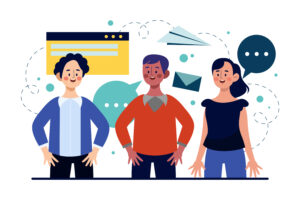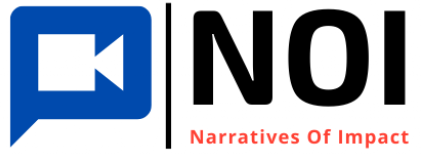How digital storytelling can measure impact?
The NOI Project aims to understand how stories’ impact can be measured, that’s why we worked on a Toolkit for practitioners and facilitators that will help them to use storytelling as a tool for the creation and the measurement of impact.
As we mentioned in the Toolkit, digital storytelling is a way to create stories using digital tools and multimedia such as photos, graphics, audio, and video files. A digital story can take different forms, allowing organizations and their team to combine various media engagingly and interestingly. But how digital storytelling can measure impact?
Recording people’s stories of lived experiences using digital tools, for instance, can help to collect important, rich anecdotal data.
It can be used to see how well a service, organisation, or project is performing meanwhile measuring its impact. Moreover, it can help people who use the service to voice their opinions about it.
We still don’t know all the infinite possibilities of measuring impact with storytelling. But we do know how to tell a story efficiently, especially with digital media.
One of the key aspects when approaching storytelling, is the WHY, WHO and WHAT
WHY
When organizations and their team are about to use storytelling, determining the WHY of a story is crucial.
What is the reason you’re telling your story? When you know the purpose of your story, your story is clear as well, and an effective purpose can inspire people into action. Without a purpose, is difficult to draw people to what you have to say.
That’s why, if we want to tell great stories, we need to make the WHY clear in our storylines.
WHO
A target audience is WHO you tell your story to. It’s the group of people who would be the most helped or entertained by your story. When narrating a story, you need to know your target audience and how to appeal and entertain them. There are topics and content that certain demographic will be likely to find interesting.
Some of these contributing demographic traits are gender, sex, orientation, age, education, sociopolitical factors, preferences, life experiences, etc. Knowing what type of person could enjoy your stories will help you to prepare those stories more precisely, and it can help you reach more people (or specific people).
These are only a few specific reasons you want to know your target: the language, you need to know how that audience speaks; communication channels, where to publish your story according to your audience; the message, and what you want to tell with your story.
WHAT
Lived experiences, for instance, are the WHAT: meaning that the real and personal experiences of people can shape the story, sharing their perspective about an experience in their daily lives. Lived experiences are so powerful in storytelling because they elevate the voices of people that are often talked or written about without being given the chance to offer their input, or shape their narrative.
They provide deeper insights and knowledge that people have gained from their experiences and choices during life, which is a valuable source of knowledge. For example, people with disabilities are experts in their condition, as they have deep and personal understandings of their condition and its implications on every aspect of their lives, but they do not always have the chance to talk about their condition. The lived experience reflects a diversity of experiences, which are varied and different. There is no single experience, even amongst people who share a specific condition or impairment.
When many people can share their stories, it provides a diversity of views, voices and perspectives to view disability through. This allows stories to reflect the true diversity within our communities to broaden our understanding.

Creating effective digital storytelling
Another key aspect relies on the following four elements that we recommend organizations and their team use when it comes to creating effective digital storytelling:
- Introduction/Hook:something that grabs the readers’ attention and connects to their curiosity or interest, such as an image, a remark or an expression. This doesn’t mean that you are allowed to use a clickbait title, because the reader could be disappointed by the absence of correspondence between the hook and the story’s content.
- Call To Action:something compelling and easy that people can do right now to impact the outcome and support the solution. For example, when you post on Social Media, you should consider using a call to action, such as “Click the Link” or “Comment Below”. Of course, the call to action depends on your objective.
- Connection:what your readers or viewers feel from your story. Feelings of extreme anger or happiness most often lead to action, with feelings of hopelessness being the least effective in driving change. When you create a digital story, remember to be emotional and empathic so that you can connect with your readers.
- Interaction:the story should not be a closed chapter. It should be a starting point for interaction with listeners, which contributes to their engagement.
A story that contains these four elements can create more impact than one that doesn’t follow this structure. A good story is a story well told that will interest the recipients. Minimize barriers between the narrative and the audience. The story is to be told in simple and clear language, it is about both the choice of words and graphics.
If you want to understand more about how stories’ impact can be measured, read our Toolkit.
